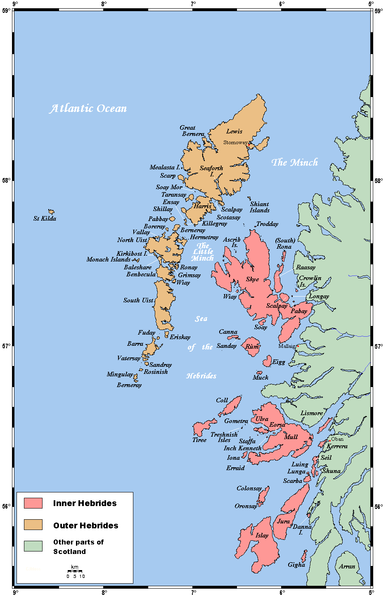http://www.irishtimes.com/newspaper/bre ... king85.htmWe're seeing reports popping up on the internet of a huge fireball spotted over Ireland at around 6pm local time on Feb. 3, 2010.
UT: Huge Fireball Reported Over Ireland
UT: Huge Fireball Reported Over Ireland
http://www.universetoday.com/2010/02/03 ... r-ireland/
- geckzilla
- Ocular Digitator
- Posts: 9180
- Joined: Wed Sep 12, 2007 12:42 pm
- Location: Modesto, CA
- Contact:
Re: UT: Huge Fireball Reported Over Ireland
Hope the Irish had their camera phones ready. 
Just call me "geck" because "zilla" is like a last name.
UT: Video, Images of Ireland Fireball?
http://www.universetoday.com/2010/02/05 ... -fireball/
Universe Today: 2010 Feb 05
Universe Today: 2010 Feb 05
So far, no images or video have surfaced of the huge fireball that was reported in the skies over Ireland on February 3, 2010. The Daily Mail posted a video, but it appears to be one from a year ago, maybe earlier. They write that meteorite hunters are on the look-out for fallen space rocks in Ireland, and David Moore of Astronomy Ireland is quoted as saying that meteorites likely landed on Irish soil and not at sea, as many witnesses who saw it along the coast said it was traveling inland.
"This is a huge event," Moore said, "There's a good chance we may end up finding this one."
Witnesses from around the country spotted the fireball around 6 pm local time, but so far not many images or videos have been posted online. The images The Daily Mail posted were not credited and appear to be screen shots from the video.
Moore said the meteor was traveling at a 100,000 miles per hour, or the equivalent of a small atomic bomb blast in the skies.
- neufer
- Vacationer at Tralfamadore
- Posts: 18805
- Joined: Mon Jan 21, 2008 1:57 pm
- Location: Alexandria, Virginia
I'm shocked! Shocked I tell you!
http://dsc.discovery.com/news/2008/04/03/scotland-meteor-impact.html wrote:
_Monster Meteor Once Hit Scotland_ by Larry O'Hanlon, Discovery News
April 3, 2008 -- <<A tad more than a billion years ago, a chunk of rock a third of a mile wide punched into what is now northwest Scotland, says a geologist who has found definitive evidence of the meteor impact. The crater itself, however, remains hidden.
The evidence for the impact comes in the form of microscopic quartz grains with telltale "shock metamorphic" features that can only be created by the intense pressures of a meteor impact. "I think this is a very good, solid announcement," said meteor researcher Jay Melosh of the University of Arizona. Melosh fields many claims of meteor impacts -- most of which are unfounded. But shocked quartz is impossible to create any other way, so it's definitive even when the crater is missing.
The approximate site of ground zero for this, the largest known meteor to have hit the British Isles, is suspected to be near the Scottish town of Ullapool. The crater is thought to be buried deep under local rocks, still awaiting discovery. "It's actually a bit of a mystery where the crater is," geologist Ken Amor of Oxford University told Discovery News. Amor published his discovery in the April issue of the journal Geology.
What spurred him to study the grains from Ullapool under a microscope was a hunch he had while leading undergraduates on a field trip. In the sequence of rocks exposed by erosion near Ullapool is a layer called the Stac Fada Member. It has long been interpreted as some sort of volcanic ash or mudflow, like those that formed in the goopy aftermath of the Mount St. Helens eruption.
It has always been an oddball layer of rock, however, since there are no other volcanic rocks in the region and no known extinct volcano. What's more, beneath the Stac Fada layer there are more troubling features: 30-foot-long, 2-foot-thick slabs of broken sandstone.
"They appear to be ripped up," said Amor of the sandstone slabs. There are also signs of trapped water having been squeezed upward and out through the rocks, as if it were trapped underground by a sudden, powerful event. Everything seemed to imply a high-energy environment. All those features are circumstantial, however. It's the shocked quartz that cinches the deal.
A good example of the persuasive power of shocked quartz is the recent case of Upheaval Dome, Utah, published in the March issue of Geology. The crater-like feature has been studied for almost a century and sparked heated controversy about its origins. Now, after the discovery of shocked quartz there as well, Upheaval Dome's origin -- like the missing crater at Ullapool -- is indisputable.>>
http://en.wikipedia.org/wiki/Ullapool_bolide_impact wrote:
<<Evidence for a bolide impact centered on Ullapool was published by a combined team of scientists from the University of Oxford and the University of Aberdeen, in March 2008. The evidence is centred on Ullapool, a harbour town on Loch Broom in the Ross and Cromarty district of the Highland council area of northwest Scotland. This suggests it was the largest bolide impact ever to strike what are now the British Isles. The impact, about 1.2 billion years ago, melted rock at the site and left parallel shock fractures in quartz and biotite and a tell-tale trace of iridium. Centered on the impact crater, a wide ejecta field has been traced, some 50 km across. The affected layer of rock, which on land stretches from Gairloch in the south to Stoer in the north is six to 22 metres thick. Until recently, these anomalous formations were unsatisfactorily credited to an isolated instance of volcanism.
The crater, preserved under sedimentary layers of sandstone, is currently presumed to lie under the Minch, the waterway that separates the Isle of Lewis in the Outer Hebrides from the north-west Highlands of Scotland.
It has been estimated that the impact would have created a blast with the force of 145,000 megatons and that the shock wave would have created winds of 420 km/h as far away as the site of modern Aberdeen.>>
Art Neuendorffer
